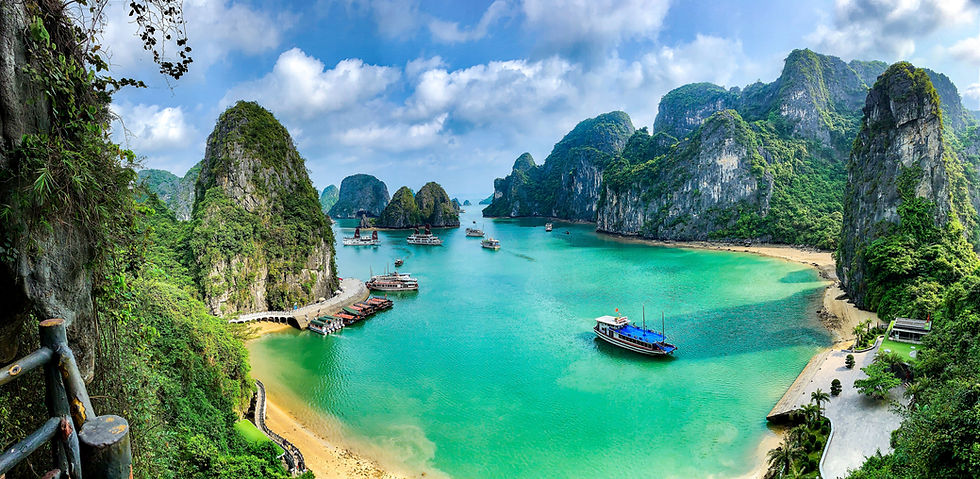What are the best wildlife trips in South and Central America?
- Adventure Coordinators
- Apr 27, 2018
- 3 min read

Most people when planning a wildlife trip will think of Africa. Yet South and Central America boast some of the world's premier wildlife experiences. We are all familiar with the Galapagos Islands and Costa Rica. But what about the Pantanal, the Falkland Islands or Peninsula Valdes? Here are the best wildlife trips in South and Central America.
Belize Visitors to Belize are often impressed with the level of commitment to preservation their local guides show. The rain forests offer opportunities to see howler monkeys, spider monkeys, toucans, parrots, crocodile and the country has the world's first and only jaguar reserve. Meanwhile the Caribbean has of the best snorkelling in the world over the corals of the longest reef in the Western Hemisphere. View adventure tour View wildlife tour
Costa Rica Imagine staying in a lodge where when you step out, you are surrounded by nothing but nature. Birds sing in the trees, a troop of monkeys swings in the canopy and the vegetation is so lush you have to rub your eyes to make sure you are not dreaming. Hike through cloud forests in search of birdlife, engage in adventure activities such as ziplining and rafting. One of the few countries where the rainforest meets the beach, Costa Rica is Central America's undisputed eco-capital. Undiscovered Costa Rica View Wildlife tour
Los Llanos While Venezuela is currently under travel advisory, no discussion of Latin America's best wildlife experiences would be complete without the flooded grasslands and savannas of Los Llanos. During the rainy season (May to October), parts of the Llanos turn into a temporary wetland, home to unique bird and wildlife. Los Llanos can be visited in Colombia as well and many ranches there have opened their doors to adventurous travellers looking for activities such as mountain biking, caving, rafting, horseriding, fishing and hiking.
Galapagos The undisputed natural highlight of South America is the Galapagos Archipelago, with their otherworldly volcanic landscapes and stunning array of wildlife. Snorkel with sea lions and penguins, come close to boobies and albatrosses, iguanas and tortoises and watch whales. This is nature in its primordial state, nature as it used to be. Download our free Ultimate Galapagos Planner
Amazon
The Amazon jungle is the world's largest rainforest, covering 2.6 million square miles of land. The forest combined with the savannah, flood plains and rivers is home to a staggering biodiversity: 30,000 plant species, 1,800 types of fish, 1,300 bird species, 311 different kinds of mammal and 165 types of amphibian. Whether you chose to visit the region in Peru, Ecuador or Brazil will depend on the time of year and the length and budget of your trip. Peru offers some of the best parrot sighting spots in the world and you can combine your trip with Cuzco and Machu Picchu. Brazil has the exclusive Cristalino Lodge which can be easily combined with the Pantanal. And in Ecuador you can combine your trip with a visit to the Galapagos. Even Colombia's Amazon has opened up for travel, after a 50 year hiatus. It is a biologists' dream with hundreds of new species, including monkeys, having been discovered in the past five year. Ask us about our Amazon trips
Pantanal The Pantanal straddles the borders of Brazil, Paraguay and Bolivia and is the world's largest wetland region. Its plains and low scrubby forests are home to over 1000 species of bird and 300 different mammals, including tapirs, anteaters, Jabiru storks and the striking Hyacinth macaw. If you are lucky you may even see the elusive jaguar. Land of the Jaguar Jaguars & Wildlife of Brazil's Pantanal
Peninsula Valdés The Valdés Peninsula covers over 3600 square kilometres of salt lakes and coastline that provide breeding grounds for elephant seals, sea lions and the southern right whale. Offshore orcas hunt occasionally by beaching themselves to snatch a seal or penguin. The area is populated by large numbers of rheas and guanacos, as well as over 180 species of birds. View tour
Falkland Islands The archipelago is home to thriving Magellanic, gentoo and rockhopper penguin colonies, and if you’re lucky, you may even spot king penguins. Black-browed albatrosses live on West Point Island along with the endemic Cobb’s wren and Falkland’s flightless steamer duck. Carcass Island (named after the ship which surveyed the island in 1766) rewards with spectacular scenery and wildlife, including gentoo and Magellanic penguins. With no predators, the island’s songbird population has flourished, creating an aural experience unlike any other. View cruise




Comments